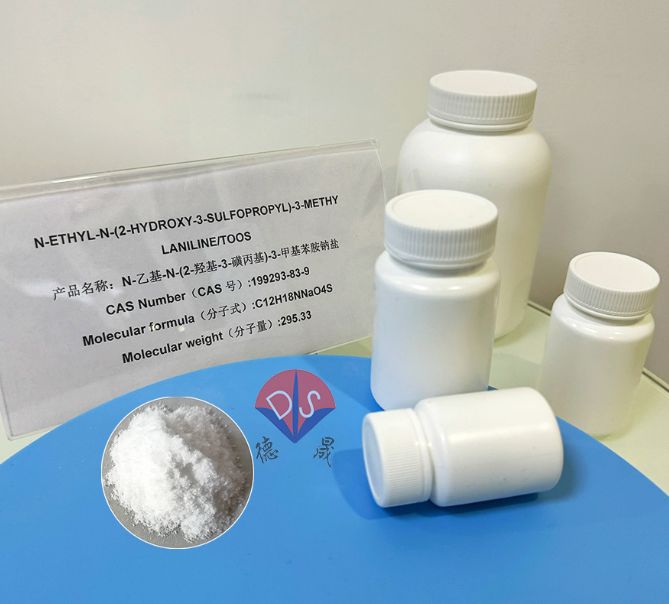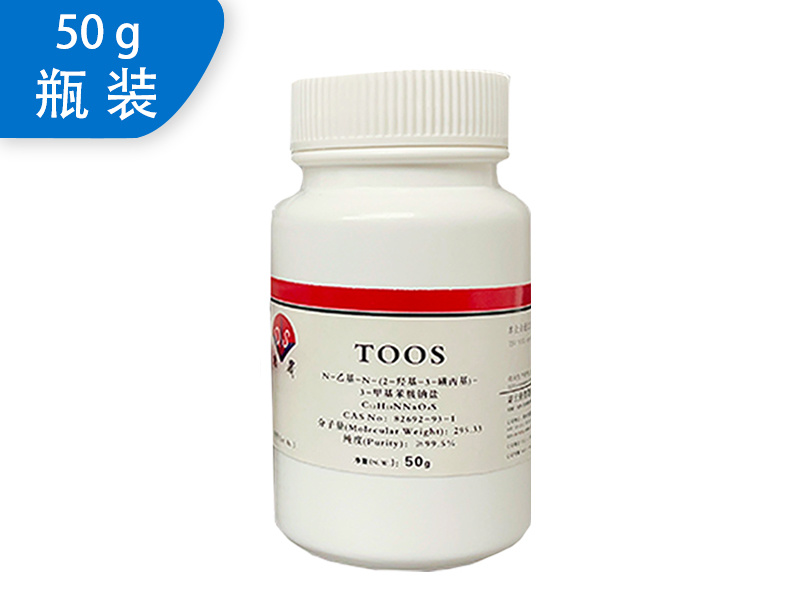The dual role of Tris and TOOS in lipoprotein residue cholesterol detection kit
Release time:
2025-08-07
In the lipoprotein residue cholesterol detection kit, Tris and TOOS each emit light and heat based on their respective characteristics, and through close coordination, ensure the quality of lipoprotein residue cholesterol content detection in human serum samples, providing key basis for clinical diagnosis and treatment.

TOOS powder
The key role of Tris
1. Building a stable reaction pH environment: Tris (trihydroxymethyl aminomethane), as a highly favored buffer in the field of biochemistry, shoulders the responsibility of stabilizing the pH value of the reaction system in lipoprotein residue cholesterol detection kits. The sample itself has a complex composition, containing various acidic and alkaline substances. In addition, the enzymatic reactions involved in the detection process constantly generate and consume protons, which can easily lead to drastic fluctuations in the pH value of the reaction system. And many key enzymes involved in RLP-C detection, such as cholesterol oxidase, cholesterol esterase, etc., their catalytic activity is extremely sensitive to pH environment. Tris, with its acid-base buffering ability, accurately stabilizes the pH of the reaction system within an appropriate range, ensuring that enzyme molecules maintain their active conformation and allowing the conversion process of lipoprotein residue cholesterol to proceed smoothly and continuously.
2. Optimize enzymatic reaction: In addition to stabilizing pH, the presence of Tris can adjust the microenvironment around the active center of the enzyme preparation, making it easier for substrate molecules to approach and bind to the enzyme's active site, while accelerating the detachment of hydrolysis products and promoting the reaction to quickly develop towards the direction of generating the target product. This not only significantly shortens the detection time and improves the laboratory's detection throughput, but also ensures the capture of RLP-C content information in serum samples in a short period of time, meeting clinical needs.
The functions of TOOS
1. Serving as a highly sensitive chromogenic substrate: TOOS (N-ethyl-N - (2-hydroxy-3-sulfopropyl) -3-methylaniline sodium salt) is the key to achieving quantitative detection of RLP-C in the reagent kit. As the detection process progresses, the conversion of lipoprotein residue cholesterol in serum samples is gradually completed through a series of enzymatic reactions. Under the catalysis of hydrogen peroxide and peroxidase, the molecular structure of TOOS undergoes specific oxidative changes, resulting in color changes at specific wavelengths. This color change is closely related to the content of RLP-C in the sample. By measuring the absorbance with a high spectrophotometer and using a standard curve, the concentration value of RLP-C can be converted, presenting the cholesterol content of lipoprotein residues hidden in serum in a visual and quantitative form.
2. Ensure accurate detection of trace samples: In some specific clinical scenarios, the levels of lipoprotein residue cholesterol in serum are often negligible. Conventional detection substrates are difficult to produce clear and distinguishable detection signals when faced with such small amounts of target substances. However, TOOS, with its chemical structure and reaction mechanism, can quickly initiate color reactions at extremely low concentrations of hydrogen peroxide. Even if the RLP-C content in the sample is low, it can sensitively capture and convert into significant color signals, avoiding the risk of false negative results.

Product packaging
With the stable and reliable buffering performance of Tris and the high sensitivity and stable color development characteristics of TOOS, it plays an important role in the detection kit for lipoprotein residue cholesterol, greatly reducing the interference of external factors on the detection results and ensuring the accuracy and consistency of the lipoprotein residue cholesterol concentration data obtained in each test. As a research and development manufacturer of Tris and TOOS, Hubei Xindesheng Material Technology Co., Ltd. can supply raw materials with a purity of 99%, strong buffer stability, and high sensitivity of color developing substrates. If you have purchasing intentions, please feel free to click on the website for consultation at any time!
Previous page
Next page
Previous page
Next page
Contact details
Contact number
Address: C8, Guanggu United Science and Technology City, Ezhou City, Hubei Province
Fax:0711-3704 589
Follow us



